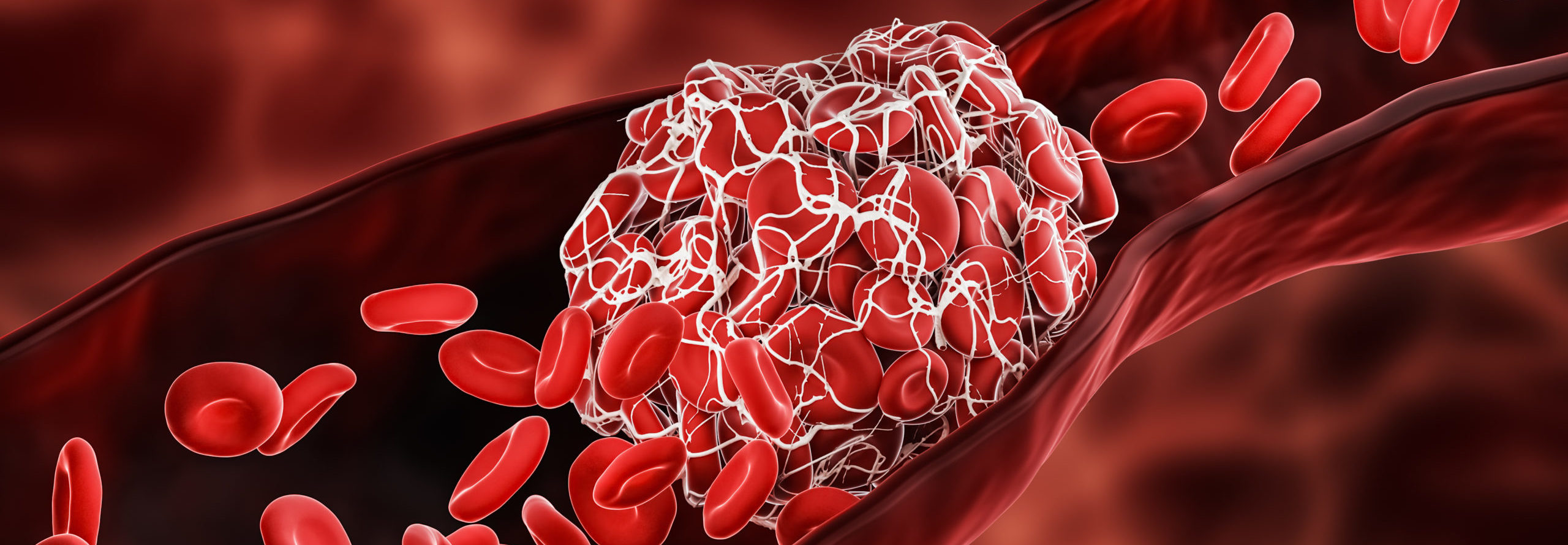
Walk to the mailbox and feel pain that stops you in your tracks? Can’t shake discomfort, aches, weakness and fatigue? Have legs that feel swollen and tight? Are these just normal signs of aging? No. These could be signs of a much larger problem: blood clots.
Dee White, APRN, clinical director of Arkansas Heart Hospital’s vein, vascular and wound care program, says this pain is not normal and should be addressed.
“If you have pain in your body, there is something going on,” she says. “We need to remind ourselves that the body gives us a great measure of what’s going on and we need to pay attention.”
If you have these symptoms, what should you do? First, let’s look closer at blood clots and how you prevent them.
What is a blood clot?
A blood clot is a mass of blood that forms when platelets, proteins and cells in the blood stick together and moves through the blood stream until it gets stuck in a narrow passageway.
Most people associate blood clots with heart attacks, strokes and other heart related issues. This is not always the case. They can affect arteries or veins distant from your heart (peripheral) that feed the legs, arms, feet and hands. This leads to symptoms such as pain, aching, swelling, tenderness and fatigue.
“These symptoms are telling you that something is preventing that blood flow. The blood is important because it carries the nutrients and the oxygen to the tissues, and if that oxygen can’t get to those muscles, they begin to not want to work,” White explains. “Your legs get tired, they get tight, they can even go to full blown pain until it stops you in your tracks because they are not getting fed. You must remove that obstruction or that blockage so those muscles can be fed again.”
What are blood clot risk factors?
Anyone can develop a blood clot, but there are certain factors that increase the risk. These include:
Acquired risk factors:
- Smoking
- Overweight and obesity
- Pregnancy
- Age
- Prolonged bed rest
- Long periods of sitting
- Use of birth control pills or hormone replacement therapy
- Cancer
- Injury to a vein or muscle
Medical conditions and diseases:
- Heart disease
- Lung disease
- Cancer and its treatment
- Inflammatory bowel disease
- Diabetes
- Heart failure
- Atrial fibrillation
- Vasculitis
- Atherosclerosis
- Metabolic syndrome
How do I prevent blood clots?
The answer to preventing many health conditions is a healthy lifestyle, and that’s also true for blood clot prevention. Developing healthy habits now will certainly lower your risk of blood clots in the future. Here are practical steps you can start today to prevent blood clots:
Maintain a healthy weight – People who are obese are more than twice as likely to develop a blood clot in their legs compared to those of normal weight. If you are struggling with weight loss, talk with a health care provider about ways to achieve a healthy weight. If traditional diets are not successful, reach out to our Bariatric & Metabolic Institute to learn about our bariatric surgery options.
Exercise regularly – Exercise is good for preventing a multitude of diseases and is especially good for blood clot prevention. Clotting is often caused by long periods of inactivity, so regular movement can prevent that as well as reduce other conditions such as diabetes and obesity that can cause clotting.
Drink water – Dehydration can cause blood vessels to narrow and blood to thicken, raising the risk for blood clots. So, make sure you drink plenty of water daily.
Stop smoking – One of the single most effective steps you can take to prevent blood clots is to stop smoking. Chemicals in cigarettes make it more likely for platelets to stick together and damage the lining of the blood vessels, which can cause clots.
Sit less – Blood circulation slows when you sit for long periods of time, which can cause blood cells to clump together to form a blood clot. Moving whenever possible during the day is a simple, effective way to reduce your risk for clots.
Eat less sodium – Eating too much salt has been proven to damage blood vessels and cause arterial stiffness which can lead to blood clots. So, stay away from packaged, processed food and focus on fresh, frozen or canned vegetables with low sodium.
Try compression – In some cases, your physician may recommend compression socks and stockings to help move blood through your veins towards your heart.
Take prescription medications – Some physicians will prescribe medications to prevent blood clotting such as blood thinners. Make sure to follow the guidance of your doctor before taking these medications.
What should I do if I have blood clot symptoms?
If you suspect you may be suffering from a blood clot, reach out to our Vein & Vascular Institute for a consultation with one of our vein and vascular experts. We provide a complete complement of interventional and treatment options for patients suffering from decreased mobility, pain and dysfunction associated with vein and vascular conditions.
Venous insufficiency: What are your aching legs telling you?